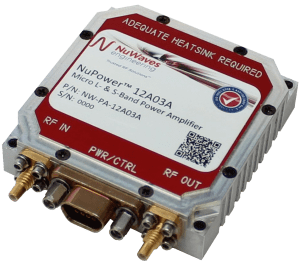Ideal for Sub-6 GHz Remote Radio Units, the Front-end Modules Deliver an Ultra-low Noise Figure and Low Power Consumption
PHILADELPHIA – INTERNATIONAL MICROWAVE SYMPOSIUM (IMS) – June 12, 2018 – In IMS Booth #1349, pSemiTM Corporation (formerly known as Peregrine Semiconductor), a Murata company focused on semiconductor integration, introduces a family of switch + low-noise amplifier (LNA) modules for 5G massive multiple-input, multiple-output (MIMO) base stations. With an ultra-low noise figure and excellent input power handling, these modules are ideal for protecting remote radio units that operate in the sub-6 GHz frequency bands.
“As massive MIMO increases the number of transmit and receive channels, base-station equipment manufacturers are requiring more highly-integrated and low-power solutions,” says Jim Cable, chief technology officer of pSemi, a Murata company. “Building on our 30-year history of RF integration, pSemi combines our high-performance switch and LNA products into a family of integrated front-end modules. Compared to competing solutions, the pSemi switch + LNA modules have lower power consumption and superior ESD robustness. But most importantly, the overall solution size is 60 percent smaller due to integration and the fact that no external RF matching components are required.”
The switch + LNA modules—the PE53111, PE53211, PE53110 and PE53210—support sub-6 GHz 5G new radio (NR) bands and meet the stringent RF system requirements of massive MIMO base stations. The PE53111 and the PE53211 cover a frequency range from 2.3 to 2.7 GHz (bands 40, 41, n7, n38, n41), while the PE53110 and PE53210 extend from 3.3 to 3.8 GHz (bands 42, 43, n78). In a single-channel or dual-channel configuration, the receiver modules integrate two-channel LNAs with bypass function and high-power switches. An on-chip, fail-safe switch—with over 5W average power handling—improves the overall robustness of the receive channels. Design engineers can control each channel individually within the selected frequency band, offering flexibility in the overall system design. Regarding performance, the pSemi switch + LNA modules deliver a very low noise figure, high linearity and low power consumption. The modules offer ESD protection up to 1kV HBM and operate in environments up to 105 degrees Celsius.
Offered in a 32-lead, 5 x 5 mm LGA package, the PE53111, PE53211, PE53110 and PE53210 are now available as engineering samples. Contact sales@psemi.com to request samples.
Visit pSemi at IMS booth #1349 to see the switch + LNA modules on display.
About pSemi
pSemi Corporation is a Murata company driving semiconductor integration. pSemi builds on Peregrine Semiconductor’s 30-year legacy of technology advancements and strong IP portfolio but with a new mission: to enhance Murata’s world-class capabilities with high-performance RF, analog, mixed-signal and optical solutions. With a strong foundation in RF integration, pSemi’s product portfolio now spans power management, connected sensors, optical transceivers antenna tuning and RF frontends. These intelligent and efficient semiconductors enable advanced modules for smartphones, base stations, personal computers, electric vehicles, data centers, IoT devices and healthcare. From headquarters in San Diego and offices around the world, pSemi’s team explores new ways to make electronics for the connected world smaller, thinner, faster and better. To view pSemi’s semiconductor advancements or to join the pSemi team, visit www.psemi.com.
###
The Peregrine Semiconductor name, Peregrine Semiconductor logo and UltraCMOS are registered trademarks and the pSemi name, pSemi logo, HaRP and DuNE are trademarks of pSemi Corporation in the U.S. and other countries. All other trademarks are the property of their respective companies. The pSemi website is copyrighted by pSemi Corporation. All rights reserved.





